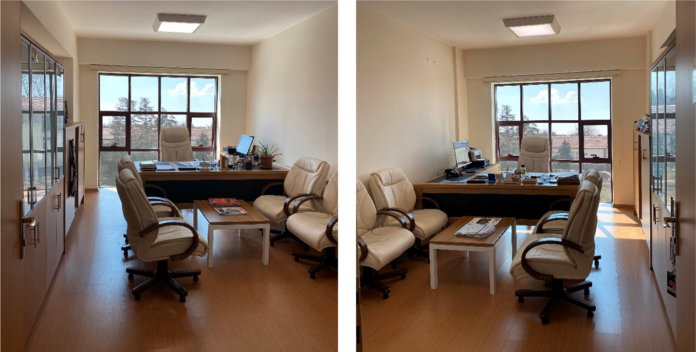Office users spend most of their time outside of sleep inside the buildings in which they work (Aries et al., 2010; Schweizer et al., 2007). Office buildings should be carefully designed for energy efficiency, sustainability and protection of natural resources. Architects foresee some structural solutions for sustainability and put them into use by applying their designs. However, once buildings are handed over to their users, they are rarely revisited and evaluated (Meir et al., 2009). The actual efficiency of a building should be evaluated not only for its structural features but also for the benefit from the space by its users. According to Gonçalves and Marcondes-Cavaleri (2015), the actual performance of a building can be determined according to the activities, habits, expectations and preferences of users within a building. Accordingly, data that will guide physical environment and user-oriented issues, such as indoor environmental quality, indoor air quality and thermal performance, space use and user satisfaction can be accessed in addition to improving the current conditions of the buildings.
All physical environmental factors must be designed at the optimum level so that office workers can continue their lives without feeling physical, social, and mental anxiety and be efficient in their work. The optimum arrangement of environmental factors in offices can positively affect the behaviour, perceptions and spatial orientation of office users. Consequently, it is quite important to know in detail the environmental factors that affect the perceptual evaluations of offices and the ways to improve them (Kang et al., 2017).
It was determined that there were statistically significant differences between the perceptual evaluations of the physical environmental factors of offices by users between the ages of 25–45 and 46–65. According to this, it was observed that users between the ages of 25–45 generally perceived and evaluated environmental factors of offices more positively than users between the ages of 46–65. This situation can be explained as the resistance, which participants displayed to cultural change/innovation/modernity according to their sociocultural backgrounds, as related to the generation gap, their experiences and their knowledge. For example, as experience increased, a more critical attitude was displayed.
Sehgal (2012) revealed that well-organized physical environmental factors were effective in making employees more creative and productive. Employees who felt comfortable and well could focus more easily on their jobs.
Analysis
Before designing a space for real professionals to work, I need to understand concepts that make current office spaces successful. This means discerning the different spaces that have subtle but significant impacts on our subconscious. It is also important to use articles that have data on different research groups, like this one, where there are generational gaps in the data for different concepts of environmental factors. This article is especially interesting because it brings to light the idea that the same space will be perceived differently by distinct groups of individuals. Not only will the spaces designed be perceived differently but will also potentially benefit some groups more than others. It will be important to address this possibility in order to design the most beneficial space for everyone who uses it. The article does a great job of explaining the way that the workspace has a direct correlation for work efficiency.




